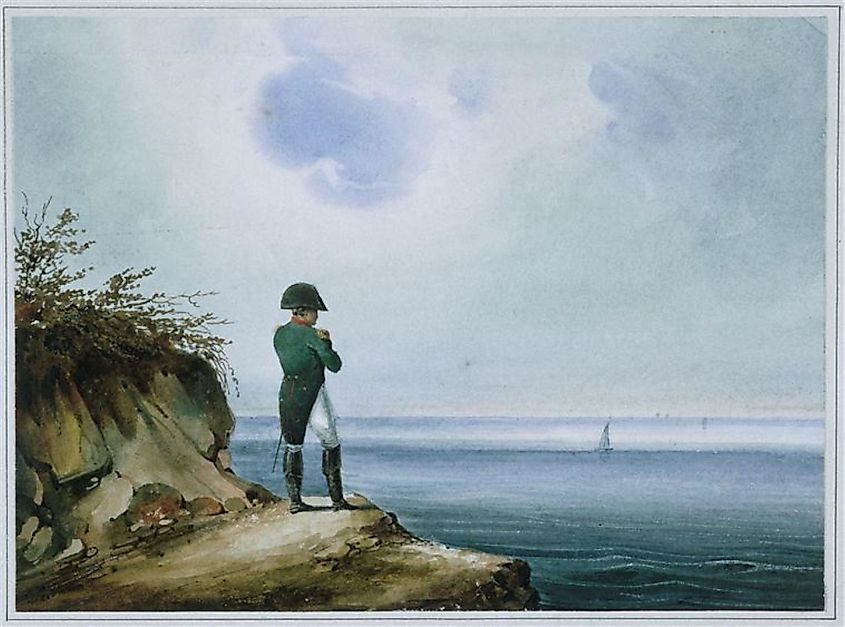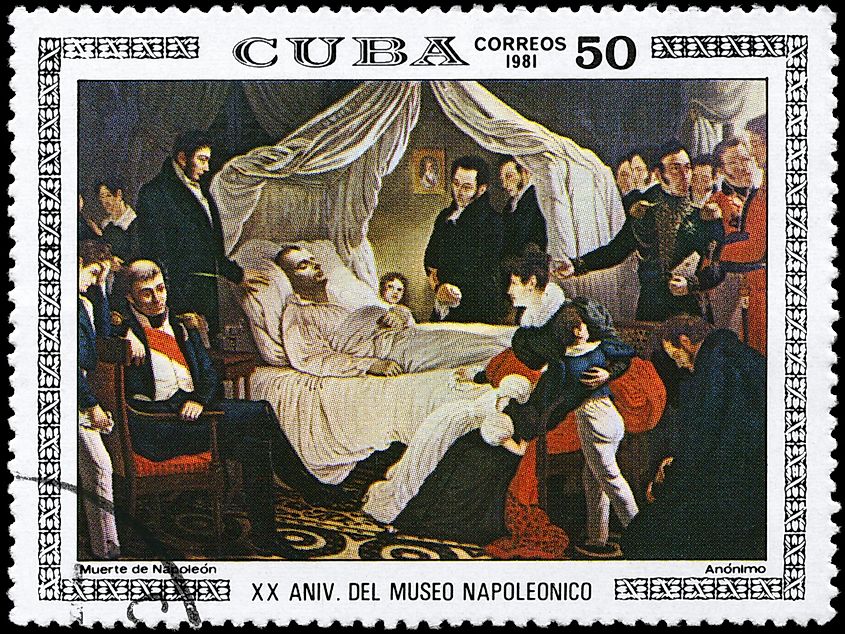
How Napoleon's Death in Exile Sparked Two Centuries of Conspiracy Theories
Wielding nicknames like ‘The Nightmare of Europe’ and ‘The Devil’s Favorite,’ Napoleon Bonaparte shocked the world with his capacity to not only lose a battle but to die. A man of incredible tact and reach, Napoleon stirred up the wrath of Europe for nearly two decades, winning war after war. It is no secret that the people of France today still adore him as a cultural icon, regardless of the man’s moral deficiencies. At the end of the day, he fought for France against all the legions of Europe. These legions could not find a weakness in his defense or strategy, but overwhelming numbers eventually did the trick at the Battle of Waterloo in 1815. After all the perils he had survived, Napoleon finally met his mortal match in 1821 against stomach cancer. However, Bonaparte created countless enemies after inflicting a path of destruction throughout Europe, and skeptics have mulled over conspiracy theories related to the exact nature of his death when he was at the mercy of his old foes.
Background

Every monarchy in Europe put a target on Napoleon’s head, as well as the entire First Republic of France that rose after the French Revolution toppled the House of Bourbon monarchy. Napoleon rose from the ashes of the Reign of Terror, a systematic execution of nobility, by climbing the Republic’s military ranks until he established the power to crown himself Emperor. Seven coalitions of nations, between 1792 and 1815, attempted to wrestle France back into the ‘old ways’ through the most violent battles in history before the World Wars.
The Sixth Coalition managed to occupy Paris and exile the man to Elba, but after 9 months, Napoleon returned and ruled for a Hundred Days. Finally, one last effort pushed him permanently from his throne, and the allied nations sent him off to the Atlantic island of Saint Helena. It is estimated that about 2.5 to 3.5 million military deaths occurred, alongside possibly 3 million civilian deaths, during the Napoleonic Wars. Thus, plenty of interested parties may have desired revenge; several assassination attempts have been made in the past, and plenty of nobility and victims’ relatives still possessed grudges against Napoleon.
Poisoning

Napoleon kept his friends close; even unintentionally, he may have kept his enemies closer. During his imprisonment, Count Charles de Montholon was a sympathizer and confidante of the vanquished Emperor and, therefore, regularly had access to the Saint Helena grounds. In a broader scheme, it is possible that the British also played a part in a slow poisoning effort that eventually killed him. Whether Napoleon was betrayed or made an example of, the result is the same: deadly arsenic levels were found in a sample of his hair during analysis in 2001. After this test, samples from 1805, 1814, and 1821 were also examined to address the conspiracy. Once again, arsenic was discovered.
The answer provided to the public has been a narrative about Bonaparte’s use of hair restorer, a 19th-century cure that contained arsenic. On the other hand, Count Charles could also have been aligned with Royalists, the group loyal to the French monarchy that Napoleon repeatedly stifled, which would satisfy a link to motive. The British had lost vast reserves of its male population and funds during the Napoleonic wars, so an extrajudicial execution of the leader would be a clear motive. By using poison over time and masking it as a disease rather than an outright execution, rebellions in France and elsewhere would have no excuse to begin revolting.
Medical Malpractice

Even modern-day patients were wary of the concept of Enema when it was first described to them. During severe constipation, fluids are pressurized into the bowels to force movements. A forensic pathologist from San Francisco proposed a theory of Napoleon’s death that exchanged the ‘grudge-carrying assassins’ trope for something much milder: Medical Malpractice. The theory states that Napoleon was suffering cramps and abdominal pain daily. The doctors of that era had fewer tools and experience than 21st-century physicians and treated the ailing prisoner with regular enemas.
Moreover, antimony potassium tartrate was administered to induce vomiting, and the combination of the two stripped Napoleon’s body of potassium. The biological dominoes began to fall, and his brain failed to regulate heartbeats, leading to his death. Although the incompetence sounds astounding, one must remember that it took until the late 19th century for doctors to halt the practice of bloodletting, wherein patients were encouraged to bleed to get rid of ‘bad blood’ as a treatment for most ailments.
Substitution Theory

Another longshot hypothesis engaged the events of 1840 when Napoleon’s remains were finally laid to rest in the Invalides military hospital. The tomb itself is gorgeous; a gilded laurel pattern decorates the floor underneath an unforgettable coffin, surrounded by statues and covered by an ornate dome. This grave, fit for a king of kings, is accused of containing the body of an irrelevant commoner. Conspiracy theorists have argued that the British Empire managed to swap out the bodies as a way of disrespecting the French Nation, during the transition to Invalides. The substitution theory also accounts for beliefs that focus on the possibility that Napoleon never gave up his clever ways and escaped to America the same way he escaped the island of Elba. His captors, the empires that put him there, would rather convince the world that he died instead of admitting their mistake.
Stomach Cancer

One study in 2005 took a very different approach than the hair and pathology examinations. By taking measurements of Napoleon’s waistbands, from 12 different pairs dated between 1800 and 1821, researchers from the University Hospital of Basel and the University of Zurich compiled data about the Emperor’s changing weight. The results indicate a shocking loss of 22 pounds near the end of his life, which aligns with the doctors’ original diagnosis of stomach cancer. The slow progression, attributed by some to poison and by others to malpractice, is a common pattern during gastric distress.
Conclusion
While stomach cancer appears to be the most likely reality, and because it is the official position, it is understandable that so much controversy has surrounded the death of Napoleon Bonaparte. It is possible that the toppled emperor lived his last days in fear, knowing that he was stuck under the thumb of enemies that had hunted him for two decades. Worse yet, by rejecting their first attempt at a peaceful transition when he instigated the Battle of Waterloo against the Seventh Coalition, Napoleon knew that he had bitten the hand that fed him. Between poisoning, malpractice, and switching, nobody can say for sure what happened to Napoleon during or after his final days on Earth. Without exhuming the body, the evidence is speculatory at best. Therefore, the evidence that does exist suggests it was nothing more than a chronic illness.











